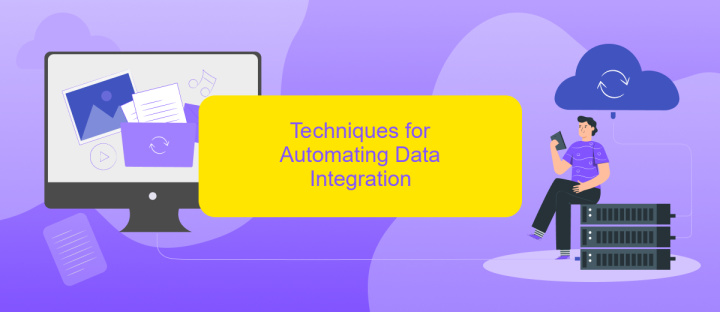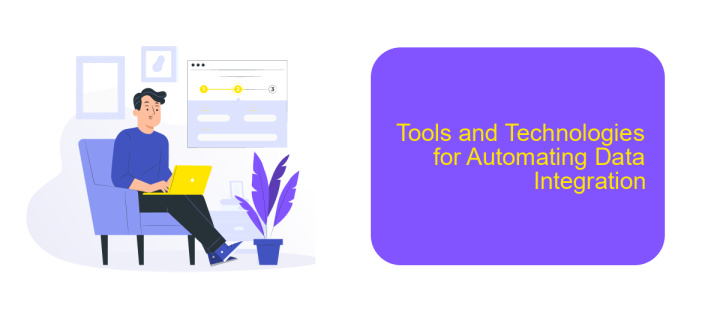Automate Data Integration
In today's data-driven world, the seamless integration of data from various sources is crucial for informed decision-making and operational efficiency. Automating data integration processes not only saves time and reduces errors but also enhances the ability to quickly respond to changing business needs. This article explores the benefits, methods, and tools for automating data integration to streamline your data workflows.
Introduction
In today's data-driven world, the ability to seamlessly integrate data from various sources is crucial for businesses looking to gain a competitive edge. Automating data integration processes can significantly enhance efficiency, reduce errors, and ensure that decision-makers have access to accurate and up-to-date information. This is where tools like ApiX-Drive come into play, offering robust solutions for automating data workflows.
- Streamlined data collection from multiple sources
- Elimination of manual data entry and associated errors
- Real-time data synchronization and updates
- Enhanced data accuracy and reliability
- Improved decision-making capabilities
By leveraging services like ApiX-Drive, organizations can automate the integration of data from various platforms, including CRMs, ERPs, and other business applications. This not only saves time but also ensures that data is consistently accurate and readily available for analysis. As a result, businesses can focus more on strategic initiatives and less on the complexities of data management.
Benefits of Data Integration Automation

Automating data integration offers numerous advantages, significantly enhancing efficiency and accuracy in data management. By eliminating manual data entry, businesses can reduce human errors and save valuable time. This streamlined process ensures that data is consistently up-to-date and reliable, facilitating better decision-making and operational efficiency. Moreover, automation enables seamless data flow across various platforms and systems, fostering improved collaboration and communication within an organization.
One notable solution for automating data integration is ApiX-Drive. This service simplifies the setup of integrations without requiring extensive programming knowledge. ApiX-Drive supports a wide range of applications and systems, allowing businesses to connect their tools effortlessly. By leveraging such services, companies can achieve faster implementation and reduced operational costs. Additionally, automated data integration enhances data security by minimizing the risk of data breaches associated with manual handling. Overall, the automation of data integration is a strategic move that can lead to substantial improvements in productivity and data integrity.
Techniques for Automating Data Integration

Automating data integration is essential for improving efficiency and accuracy in data management. There are several techniques that can be employed to streamline this process.
- ETL (Extract, Transform, Load) Tools: These tools help in extracting data from various sources, transforming it into a usable format, and loading it into a data warehouse.
- APIs and Webhooks: APIs allow different software systems to communicate with each other, while webhooks enable real-time data transfer by sending data to a specified URL when an event occurs.
- Data Integration Platforms: Services like ApiX-Drive offer a user-friendly interface for setting up integrations between multiple applications without the need for coding. These platforms support a wide range of applications and automate data synchronization.
- Machine Learning Algorithms: These algorithms can be used to identify patterns in data and automate the integration process by predicting the necessary transformations and mappings.
By leveraging these techniques, organizations can ensure seamless data integration, reduce manual efforts, and maintain data consistency across different systems. Choosing the right tools and platforms, such as ApiX-Drive, can significantly enhance the efficiency of data integration processes.
Tools and Technologies for Automating Data Integration

Automating data integration is essential for businesses aiming to streamline their workflows and enhance data accuracy. Various tools and technologies have emerged to simplify this process, making it more efficient and reliable. These solutions help in connecting disparate data sources, transforming data formats, and ensuring seamless data flow across systems.
One such tool is ApiX-Drive, which offers a user-friendly interface for setting up integrations without requiring coding skills. This platform allows businesses to automate data transfers between various applications, ensuring that data is always up-to-date and accessible.
- ETL (Extract, Transform, Load) Tools: Talend, Apache Nifi, Informatica
- iPaaS (Integration Platform as a Service): ApiX-Drive, Zapier, MuleSoft
- Data Warehousing Solutions: Amazon Redshift, Google BigQuery, Snowflake
- API Management Tools: Postman, SwaggerHub, Apigee
These technologies not only reduce manual effort but also minimize errors and improve data consistency. By leveraging these tools, businesses can focus more on analyzing data and deriving insights rather than spending time on data integration tasks. Adopting such solutions is a step towards more agile and data-driven decision-making processes.
Best Practices for Automating Data Integration
To ensure effective automation of data integration, it is crucial to begin with a clear understanding of your data sources and destinations. Identify the specific data points that need to be transferred and the frequency of these transfers. This helps in designing a robust integration workflow that minimizes errors and maximizes efficiency. Tools like ApiX-Drive can significantly simplify this process by offering pre-built connectors and a user-friendly interface, allowing you to set up integrations without extensive coding knowledge.
Another best practice is to implement rigorous monitoring and error-handling mechanisms. Automated data integration can encounter various issues such as network failures or data format mismatches. Utilize logging and alert systems to detect and address these issues promptly. ApiX-Drive provides comprehensive monitoring features that can alert you in real-time to any disruptions, ensuring that your data flows remain uninterrupted and accurate. Regularly review and update your integration settings to adapt to any changes in your data sources or business requirements.
FAQ
What is automated data integration?
What are the benefits of automating data integration?
How can I set up automated data integration for my business?
What types of data sources can be integrated using automated tools?
Is it difficult to implement automated data integration?
Strive to take your business to the next level, achieve your goals faster and more efficiently? Apix-Drive is your reliable assistant for these tasks. An online service and application connector will help you automate key business processes and get rid of the routine. You and your employees will free up time for important core tasks. Try Apix-Drive features for free to see the effectiveness of the online connector for yourself.

